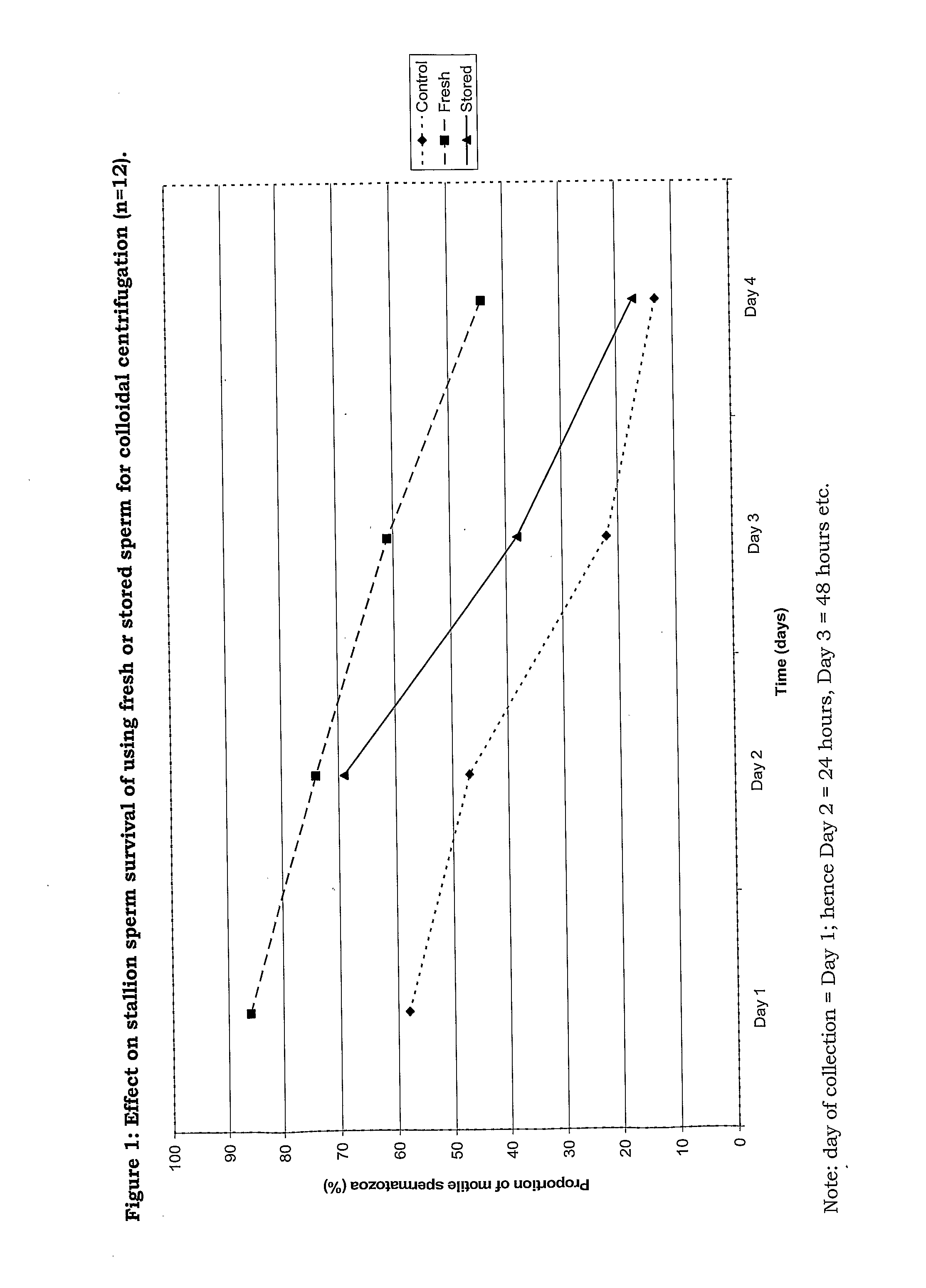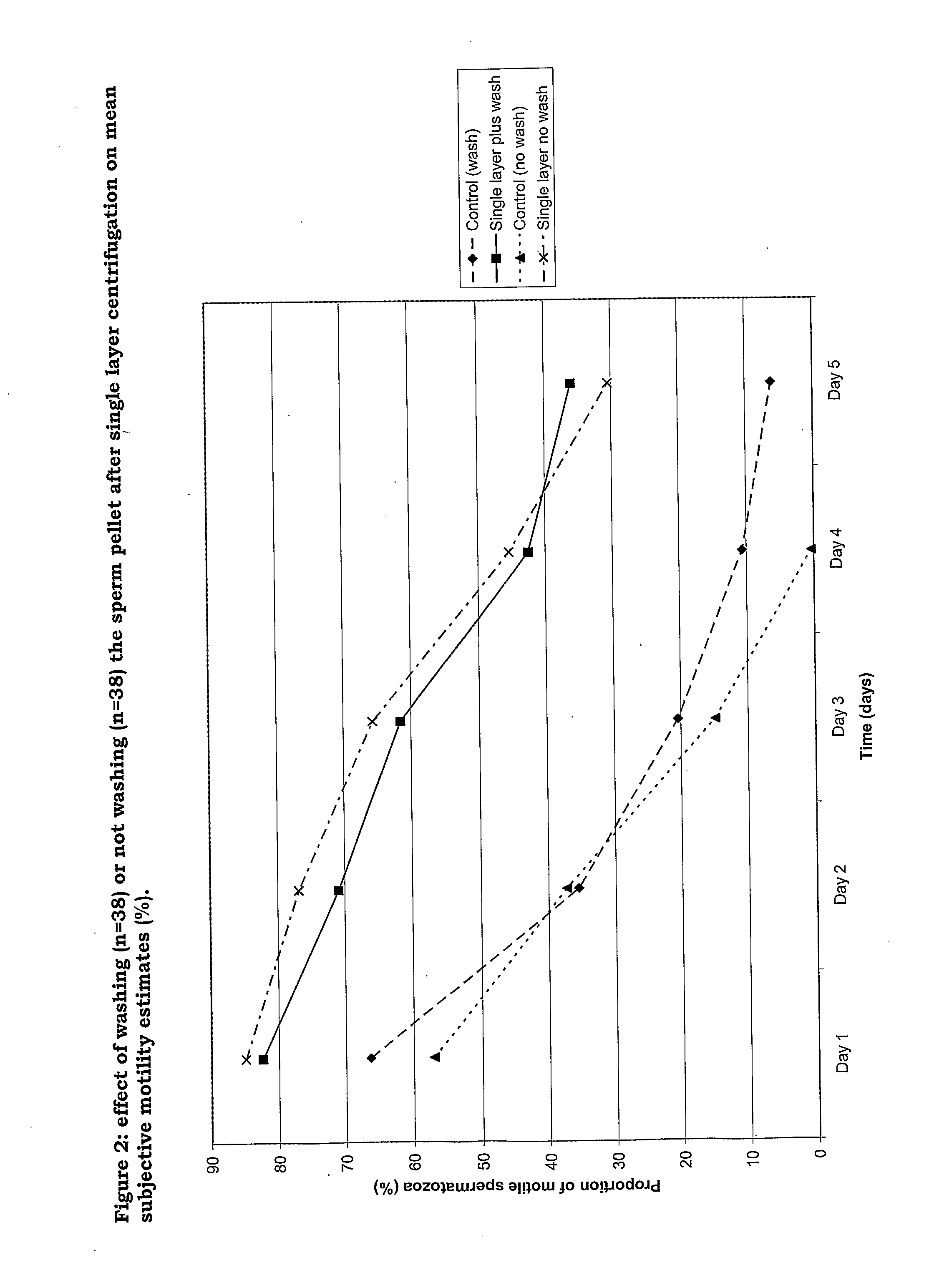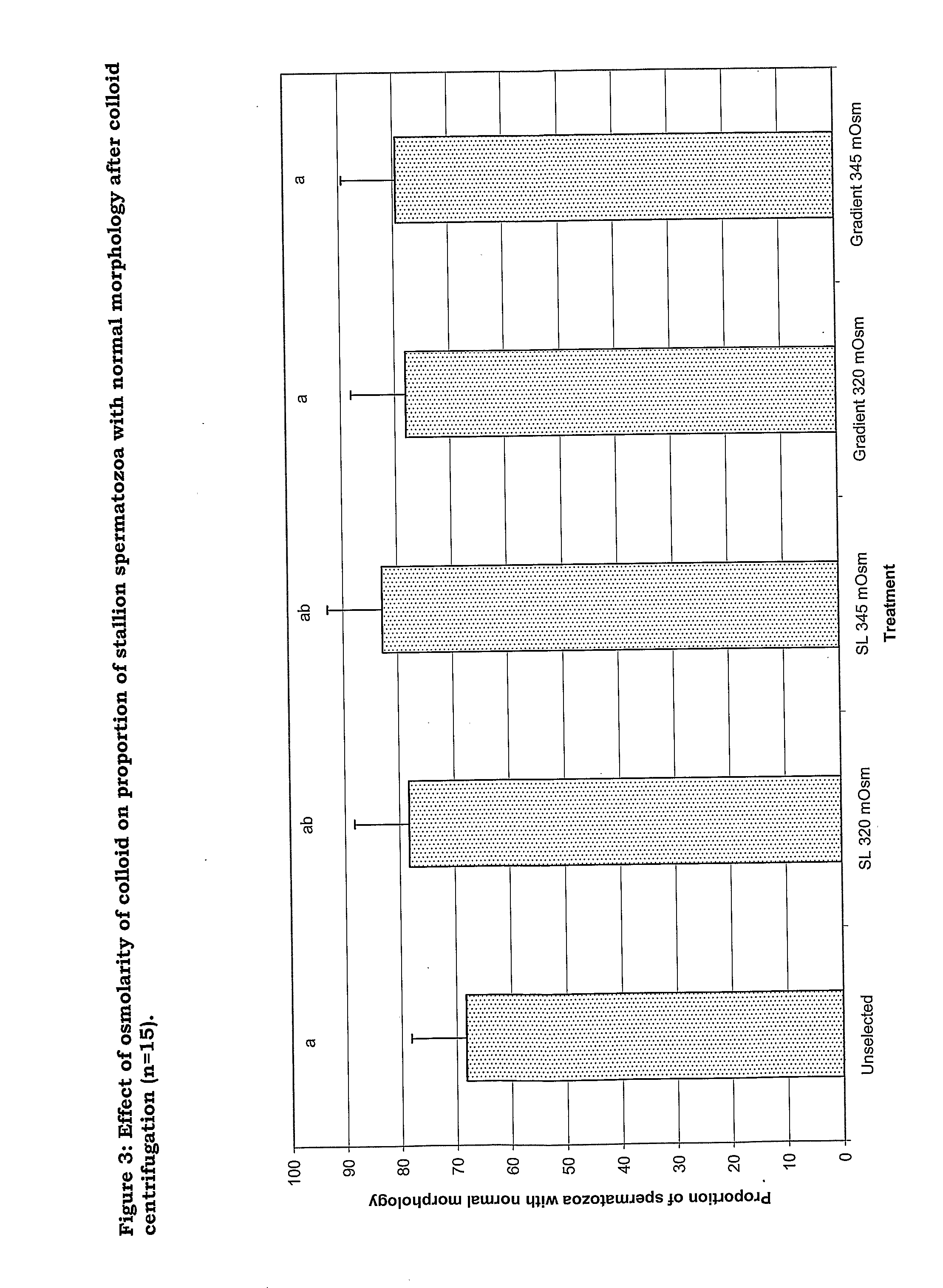Composition for separating spermatozoa from a semen sample
a technology of spermatozoa and semen, applied in the field of veterinary medicine, can solve the problems of partial lack, partial absence of selection mechanism, and partial lack, and achieve the effect of reducing the variation in sperm quality
- Summary
- Abstract
- Description
- Claims
- Application Information
AI Technical Summary
Benefits of technology
Problems solved by technology
Method used
Image
Examples
example 1
Stallion
[0073]Objectives: (i) to compare single layer centrifugation (SLC) and density gradient centrifugation (DGC) on stallion sperm quality in terms of sperm motility, yield, sperm morphology and chromatin integrity, and survival (retention of motility) using freshly collected stallion semen; (ii) to compare sperm quality following colloid centrifugation of fresh and stored stallion semen.
[0074]Methods: semen was collected from 10 stallions at commercial AI studs using standard methods. The ejaculates were extended using home-made or commercially available semen extenders (Kenneys' extender [7], INRA 96 [IMV, France)) warmed to 37° C. and the sperm concentration was adjusted to ca. 100×106 / ml. Aliquots from 38 ejaculates were used for DGC and SLC as follows: a density gradient was prepared by pipetting 2 mL of 80% colloid E into a centrifuge tube and carefully layering 2 mL of the lower density layer on top; an aliquot (1.5 mL) of extended semen was pipetted on top of the upper l...
example 2
Stallion
[0081]Objectives: (i) to investigate the changes in sperm motility, viability and chromatin integrity with storage after colloid centrifugation; (ii) to investigate the necessity of washing the sperm pellet by retrospective data analysis.
[0082]Methods: semen was collected from 4 stallions at commercial AI studs using standard methods. The ejaculates were extended using home-made or commercially available semen extenders (Kenneys' extender, INRA 96) warmed to 37° C. and the sperm concentration was adjusted to ca. 100×106 / ml. Aliquots from these ejaculates were used for SLC as described previously, using 1.5 mL extended ejaculate layered on top of 4 mL colloid (80%). The sperm pellet was not washed. Sperm quality (sperm motility, sperm viability, membrane integrity and chromatin integrity) was assessed in SLC-prepared and uncentrifuged control samples immediately and after 24 and 48 h. Methods are as described in Example 1, with the addition of the method for computerized anal...
example 3
Stallion
[0087]Objective: to investigate the effect of osmolarity and density of the colloid formulations on yield and quality of stallion sperm samples, and also the use of centrifuge tubes of different materials (glass versus plastic) and different sizes (10 vs. 50 mL) on sperm recovery rate from colloid centrifugation (SLC).
[0088]Methods: colloid centrifugation was performed as described previously with the following modifications according to the different investigations: (i) Colloids of two osmolarities, 320 and 345 mOsm, were used for single layer centrifugation and density gradient centrifugation of aliquots of 15 stallion ejaculates; (ii) colloids (4 mL) of different densities were used for SLC as follows: 40% (low density), 60% (intermediate density) and 80% (standard density); (iii) aliquots of 7 ejaculates were prepared by SLC in glass and plastic centrifuge tubes; (iv) a comparison was made using SLC or DGC in small tubes (gradient 2+2+2.5 mL, single layer 4+1.5 mL) and l...
PUM
 Login to View More
Login to View More Abstract
Description
Claims
Application Information
 Login to View More
Login to View More - R&D
- Intellectual Property
- Life Sciences
- Materials
- Tech Scout
- Unparalleled Data Quality
- Higher Quality Content
- 60% Fewer Hallucinations
Browse by: Latest US Patents, China's latest patents, Technical Efficacy Thesaurus, Application Domain, Technology Topic, Popular Technical Reports.
© 2025 PatSnap. All rights reserved.Legal|Privacy policy|Modern Slavery Act Transparency Statement|Sitemap|About US| Contact US: help@patsnap.com



